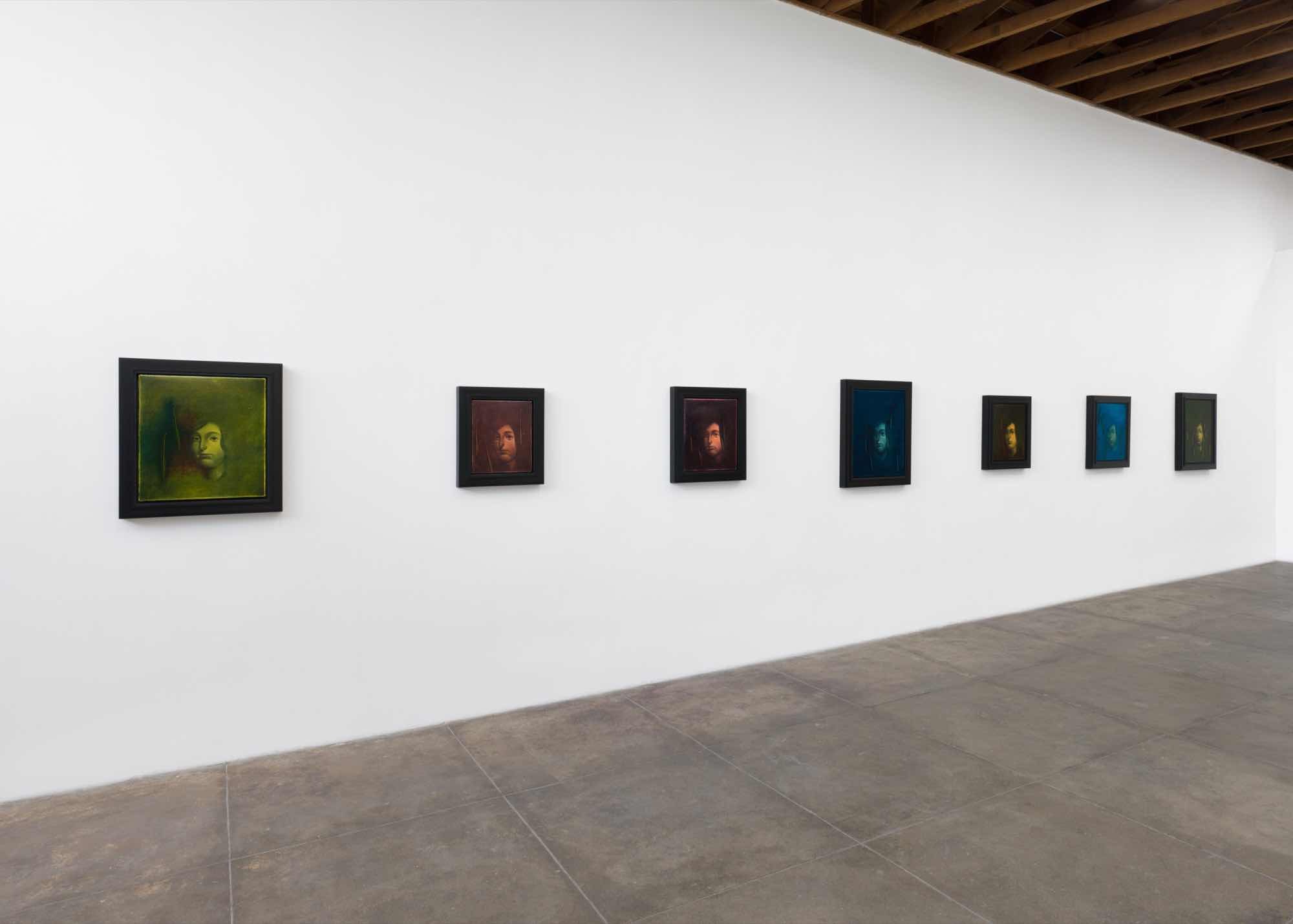Oliver Osborne
Recent Painting
07 Mar - 08 Apr 2023
Tanya Leighton is pleased to present ‘Recent Painting’, an exhibition of new works by Oliver Osborne, marking the artist’s first solo show in the United States. The works on view build on the artist’s longstanding interest in locating painting’s identity within an increasingly networked world and the distinctive visual languages that digital technology engenders. Today, it is not yet fully apparent what makes a painting of this time or rather what makes an image unmistakably a product of the 21st century. The global visual culture of the present, which is at once connected by a common lexicon of internet imagery while at the same time divided by differing techno- and geopolitical realities, complicates ideas like an artwork’s periodisation. And arguably, categories such as place of origin or stylistic tradition have less and less impact on what it means for an artwork to belong to a so-called zeitgeist.
Reflecting on art’s historicity, Osborne uses an array of visual devices and anachronistic elements to subtly scramble painting’s many grammars – introducing the inflections of one period into another – to play with visuality’s languages and our fluency with them. What is immediately apparent about the ten works in ‘Recent Painting’ is that they are all housed in sturdy rather museological frames that veritably entomb each piece behind glass. Osborne’s aesthetic decision to invoke the museum is not an arbitrary one but rather part of a number of subtle choices the artist has made to site the works within the vocabulary of painting – or more specifically painting at a given time.
As its near-comedic, non-specific title suggests, ‘Recent Painting’ calls upon the viewer to contemplate time and place as orienting concepts when it comes to unpacking a work of art. This question is further raised by the serial juxtaposition of the portrait and leaves whose multiple versions hint that Osborne’s sequential iterations could continue interminably. And while the figure in each painting may be anonymous, the style is unambiguously of European origin, but in his serial treatment Osborne’s subject stands less as a referent and more as an asset, as if like a stock image one may merely purchase and manipulate as they wish. The leaves’ duplication and free-floating placement in each piece furthers the exhibition’s sense that it is of virtual origins without being overt.
Osborne’s skill at replicating the look and feel of a particular time coupled with his sensitivity to the peculiar characteristics of digital image manipulation results in a painting practice that is at once rooted and unrooted. The paintings in this exhibition use portraiture as an archetype to enjoy the tradition’s odd ability to combine the legible with the ineffable. ‘Recent Painting’ therefore aims to articulate the visual horizon of the present by way of an about-face study of the past. And by imposing an older syntax on a modern way of speaking, Osborne’s work motions in the direction of a visual experience for which we do not yet have words.
Reflecting on art’s historicity, Osborne uses an array of visual devices and anachronistic elements to subtly scramble painting’s many grammars – introducing the inflections of one period into another – to play with visuality’s languages and our fluency with them. What is immediately apparent about the ten works in ‘Recent Painting’ is that they are all housed in sturdy rather museological frames that veritably entomb each piece behind glass. Osborne’s aesthetic decision to invoke the museum is not an arbitrary one but rather part of a number of subtle choices the artist has made to site the works within the vocabulary of painting – or more specifically painting at a given time.
As its near-comedic, non-specific title suggests, ‘Recent Painting’ calls upon the viewer to contemplate time and place as orienting concepts when it comes to unpacking a work of art. This question is further raised by the serial juxtaposition of the portrait and leaves whose multiple versions hint that Osborne’s sequential iterations could continue interminably. And while the figure in each painting may be anonymous, the style is unambiguously of European origin, but in his serial treatment Osborne’s subject stands less as a referent and more as an asset, as if like a stock image one may merely purchase and manipulate as they wish. The leaves’ duplication and free-floating placement in each piece furthers the exhibition’s sense that it is of virtual origins without being overt.
Osborne’s skill at replicating the look and feel of a particular time coupled with his sensitivity to the peculiar characteristics of digital image manipulation results in a painting practice that is at once rooted and unrooted. The paintings in this exhibition use portraiture as an archetype to enjoy the tradition’s odd ability to combine the legible with the ineffable. ‘Recent Painting’ therefore aims to articulate the visual horizon of the present by way of an about-face study of the past. And by imposing an older syntax on a modern way of speaking, Osborne’s work motions in the direction of a visual experience for which we do not yet have words.

